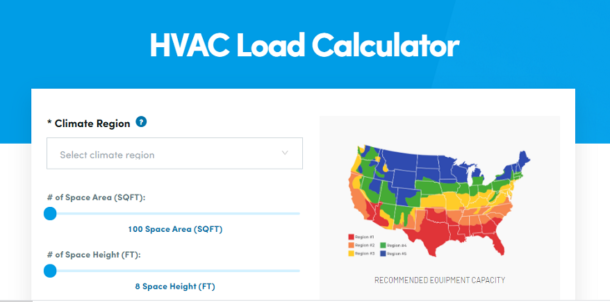Increase customer satisfaction with efficient, right-sized propane HVAC systems
Navigating the world of HVAC systems can be daunting for homeowners. It’s a big reason why homeowners tasked with selecting the right HVAC system — either in a new build or as a replacement to an existing system — will often turn to the pros for guidance.
Customers often prioritize quality and price, but there’s another component that’s equally important: size. Selecting and installing a right-sized HVAC system is key to keeping customers comfortable and satisfied year-round.
Installing incorrectly-sized systems can underperform, waste energy, and increase utility costs for homeowners. More specifically, a system that’s too small might not be able to regulate the temperature of the home. An oversized unit, on the other hand, will not work as efficiently, may wear out faster, and could have dehumidification problems.
Most importantly for professionals, is that a well-performing HVAC system can ensure a lifetime customer, so knowing what to recommend when homeowners come calling can have lasting benefits for the business.
It’s all in the details
Determining heating and cooling loads plays an essential role in sizing HVAC systems like A/Cs, heat pumps, and furnaces. Many existing homes have over-sized heating oil or propane furnaces, resulting in heating systems that blast warm air, almost too quickly, when the thermostat calls for heat. Furnaces that are properly sized for the home’s heating load, on the other hand, offer greater comfort — often with a smaller, less expensive unit. HVAC contractors can use a load calculator, which considers the home’s climate region, square footage, insulation grade, sun exposure, and more.

Every home is different, which is why it’s important that heating and cooling systems are designed for the correct load. Did you know that the same house, rotated just 90 degrees, could vary in cooling load by 25 percent or more? These calculations take time and require attention to detail, but will greatly impact a home’s performance, a customer’s satisfaction, and potentially your business’ reputation.
Understand and evaluate load size
A home’s heating and cooling loads drive how much an HVAC system needs to operate to keep a home — and your customers — comfortable year-round. It’s important for HVAC contractors to understand the three different types of loads, the amount of heating or cooling a home needs, and how they relate to a unit’s capacity to provide the best HVAC experience for their customers.
Heating load and capacity can often be easily confused. Heating load refers to the amount of heating or cooling a building needs, while heating capacity is the amount of heating or cooling an HVAC appliance can provide. HVAC professionals base the size of the systems they install on their capacity to satisfy three different kinds of loads — design load, extreme load, and part load.
Design load
The design load includes the layout of a home, its overall energy efficiency, its insulation levels, and its orientation to the sun. Homes with adequate insulation, thermal windows, and little air infiltration have lower design loads. Conditioning loads will differ between single- and two-story homes. If HVAC professionals size a home’s heating and cooling equipment to meet design loads exactly, they may unintentionally specify and install wrong-size equipment.
Extreme load
The extreme load occurs when experiencing the hottest and coldest temperatures in any given location. This load, unlike the design load, carries little weight when HVAC professionals calculate the appropriate HVAC equipment size. Plus, extreme weather conditions rarely last long enough to significantly impact a home’s overall performance and comfort.
Part load
Partial loads are the most common. During much of the day and throughout the year, heating and cooling loads fall between the design load and the extreme load. Properly-sized equipment may cycle on and off, which can impair comfort, energy efficiency, and humidity control. Fortunately, modern HVAC systems often come with variable-speed and level components that allow the equipment to adapt its running speed or level to current conditions.
Consider the energy source
Once an HVAC professional has determined the correct load and unit capacity, they can select which energy source will power the system. Propane has become an increasingly popular choice among homeowners across the U.S. because it delivers energy savings, reduced emissions, and comfort — all at an affordable cost. In fact, in some regions, high-efficiency furnaces are the most commonly installed system for new homes. In regions where an air-source heat pump is specified, pair it with a propane auxiliary unit instead of electric coils and the unit still provides comfort when outside temperatures fall below 45 degrees Fahrenheit.
High-efficiency propane furnaces offer best-in-class efficiency with ratings from 90 to 98 percent and the versatility to provide space heating to both small floor plans and large custom homes — making them a valuable addition to any project.
To learn more about propane HVAC systems, visit Propane.com/Furnaces-Boilers.
 Bryan Cordill is the director of residential and commercial business development at the Propane Education & Research Council. He can be reached at bryan.cordill@propane.com.
Bryan Cordill is the director of residential and commercial business development at the Propane Education & Research Council. He can be reached at bryan.cordill@propane.com.




Join the conversation: